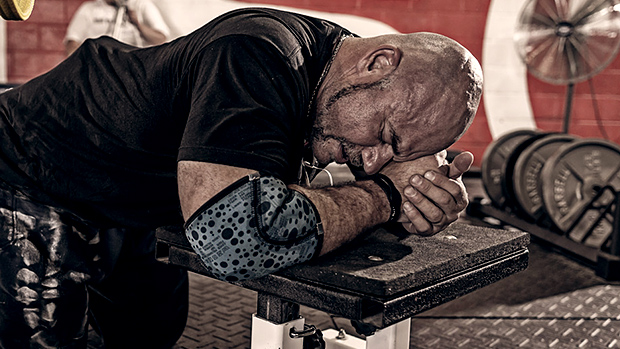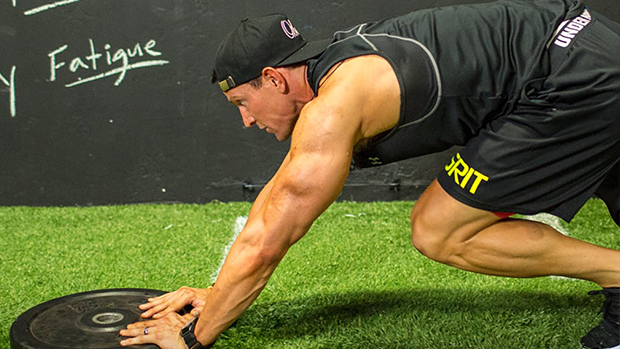Sprinting is one of the best exercises you can do. The caveat? Sprint work comes with a high injury risk. Hamstring strains are common, especially if you haven't done it in years. Here's how to prep your hamstrings for high velocity impact.
Hamstring Preparation Drills
Your hamstrings are responsible for decelerating/recovering the legs when you sprint. While having strong hamstrings is important, you need to understand how they help to recover the leg to keep yourself from pulling one.
It takes more than weight training to prep your hamstrings for the high-velocity eccentric stress placed upon them when sprinting. To avoid a strain, learn to use them properly. Use these drills as a warm-up:
1. B-March
- Drive your knee forward and up while you simultaneously smash your calf into your hamstring. This shortens the lever of your leg and sets you up to better use your glutes and hamstring to pull your leg into hip extension.
- Once your knee is about thigh high, release your leg from its folded position by extending your knee.
- Use your glutes and hams to pull your leg down to the ground. You should feel your hamstrings light up when your foot makes contact.
- Keep your toes pulled up. This increases foot stiffness and trains you to use stored elastic energy to facilitate sprinting.
2. B-Skip
This one is done faster and requires more rhythm.
Note: B-marches and B-skips require a significant amount of coordination and timing. You can reduce the complexity of the movement by putting your hands on your hips and focusing only on leg movement.
3. Straight Leg Shuffle
Focus on violently extending the hip as you pull your leg to the ground. This prepares your hamstring to recover your leg should you choose to do longer sprints. Make sure your strike the ground with the balls of the feet.
4. Straight Leg Run
Sprinting Tips
- Think of sprinting hard as a max attempt on a lift. It's something you need to prepare for, not something you should do on your first day. Sprinting at submaximal speeds (about 80%) for your first couple of workouts will greatly reduce your chances of injury.
- You can break sprinting down into acceleration and top speed phases. The acceleration phase should be considered a "push," which is mostly quad dominant. Top speed should be considered more of a "pull" since your top speed is largely determined by how fast you can recover the leg.
- Average people will accelerate for approximately 10-20 yards before they reach top speed. Elite sprinters have an acceleration phase that can last up to 40-70 meters due to their tremendous explosive ability and relative body strength.
- Do shorter sprints before building into longer ones. Keeping your sprint work to 15 yards or less on your first couple of workouts will minimize the chance you pull your hamstring since you'll most likely not be in your "top speed" phase.
- You can stretch your hamstrings all day, but if you don't do sprint-specific drills that prepare them for the eccentric stress, you'll continue to pull them if you try to sprint more than 10 to 20 yards.
- Include movements such as RDLs, good mornings, glute-ham raises, and leg curls in your weight training program to strengthen your posterior chain.





